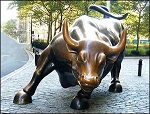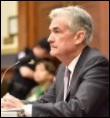A Bloomberg Column Says the Macho Culture and Risk-Taking on Wall Street Is Dead – in the Same Year that It Blew Up Archegos with 85 Percent Margin Loans
By Pam Martens: December 22, 2021 ~
 Two interesting things happened this week just one day apart. On Monday, the Office of the Comptroller of the Currency, the regulator of national banks, released its quarterly report on “Bank Trading and Derivatives Activities” which documented insane levels of risk at four federally-insured banks, which have merged themselves with Wall Street’s trading casinos to form Frankenbanks. The very next day, an opinion columnist at Bloomberg News, Jared Dillian, wrote a column lamenting the “loss of risk-taking” on Wall Street which he appears to blame on “excessive compliance and regulation.” The column was given the pity-party title: “The Wall Street That I Once Knew No Longer Exists.”
Two interesting things happened this week just one day apart. On Monday, the Office of the Comptroller of the Currency, the regulator of national banks, released its quarterly report on “Bank Trading and Derivatives Activities” which documented insane levels of risk at four federally-insured banks, which have merged themselves with Wall Street’s trading casinos to form Frankenbanks. The very next day, an opinion columnist at Bloomberg News, Jared Dillian, wrote a column lamenting the “loss of risk-taking” on Wall Street which he appears to blame on “excessive compliance and regulation.” The column was given the pity-party title: “The Wall Street That I Once Knew No Longer Exists.”
Compare these two very disparate views of the reality on Wall Street today. The OCC’s report shares this:
“The total notional amount of derivative contracts held by banks in the third quarter increased by $978.0 billion (0.5 percent) to $184.5 trillion from the previous quarter…The four banks with the most derivative activity hold 89.3 percent of all bank derivatives….”
So let that sink in for a moment. Four banks, out of the thousands that exist in the U.S., hold 89.3 percent of $184.5 trillion in derivatives – or an unfathomable $164 trillion in the same derivatives that blew up Wall Street in 2008, requiring the largest bailout of Wall Street in U.S. history.
Those four banks are JPMorgan Chase with $52.3 trillion in notional (face amount) derivatives; Goldman Sachs Bank USA with $48.3 trillion in notional derivatives (versus just $387 billion in assets); Citibank with $44.37 trillion in notional derivatives; and Bank of America with $19.6 trillion in notional derivatives.
Citibank’s parent is Citigroup, which blew itself up with derivatives and off-balance-sheet debt in 2008 and became a 99-cent stock in early 2009. It was resuscitated with then secret revolving loans from the Fed totaling a cumulative $2.5 trillion over more than two years according to a subsequent audit conducted by the Government Accountability Office.
The trading house, Goldman Sachs, the parent of Goldman Sachs Bank USA, would have also likely failed in 2008 had its billions of dollars in derivatives with the giant insurer AIG not been bailed out by the U.S. government taking over AIG and paying Goldman Sachs and numerous other banks 100 cents on the dollar for these dubious deals with a counterparty that was not reserving for losses.
JPMorgan Chase is the bank whose Chairman and CEO, Jamie Dimon, was hauled before the U.S. Senate in 2012 to explain how his bank had used depositors’ money from its federally-insured bank to gamble in derivatives in London and lose $6.2 billion in what became infamously known as the London Whale scandal. The U.S. Senate’s Permanent Subcommittee on Investigations released a 300-page report on that insane level of risk-taking at a hearing on March 15, 2013. At that hearing, the late Senator John McCain made the following remarks:
“Traders at JPMorgan’s Chief Investment Office, the CIO, adopted a risky strategy with money they were supposed to use to hedge, or counter, risk. However, even the head of the CIO could only provide a ‘guesstimate’ as to what exactly the portfolio was supposed to hedge. And JPMorgan’s CEO Jamie Dimon admitted that the portfolio had ‘morphed’ into something that created new and potentially larger risks. In the words of JPMorgan’s primary Federal regulator, it would require ‘‘make-believe voodoo magic’ to make the portfolio actually look like a hedge.
“Top officials at JPMorgan allowed these excessive losses to occur by permitting the CIO to continually breach all of the bank’s own risk limits. When the risk limits threatened to impede their risky behavior, they decided to manipulate the models. Disturbingly, the bank’s primary regulator, the OCC, failed to take action even after red flags warned that JPMorgan was breaching its risk limits. These regulators fell asleep at the switch and failed to use the tools at their disposal to effectively curb JPMorgan’s appetite for risk. However, JPMorgan actively impeded the OCC’s oversight. The CIO refused to release key investment data to the OCC and even claimed that the regulator was trying to ‘destroy’ the bank’s business.”
Did JPMorgan Chase rein in its macho/risk-taking culture after the London Whale episode of 2012-2013? Not according to federal prosecutors. JPMorgan Chase admitted to two felony counts brought by the U.S. Department of Justice in 2014 for ignoring serious money laundering warning signs for decades with the Bernie Madoff business account it held that was at the center of his Ponzi scheme. In 2015 the bank admitted to another felony charge for its traders’ role in rigging foreign exchange markets. In September 2020 the bank admitted to two more felony charges as a result of its traders engaging in “tens of thousands of instances of unlawful trading in gold, silver, platinum, and palladium…as well as thousands of instances of unlawful trading in U.S. Treasury futures contracts and in U.S. Treasury notes and bonds…” according to Justice Department prosecutors.
The macho risk-taking was so extreme in the rigging of the precious metals markets that for the first time that veterans on Wall Street can remember, three traders at JPMorgan Chase were charged under the Racketeer Influenced and Corrupt Organizations Act (RICO) statute, which is typically used to charge members of organized crime.
It should also be noted that this week marks the 9-month anniversary of the family office hedge fund, Archegos Capital Management, blowing up as a result of a handful of Wall Street banks providing it with as much as 85 percent margin loans through ginned up derivative contracts that disguised the true owner of heavily concentrated stock positions. That matter remains under investigation by the Securities and Exchange Commission and, potentially, other regulators.
No one with even a remote understanding of the brazen crimes that continue to take place on Wall Street could seriously believe that there is a “loss of risk-taking.” Bloomberg News provides this comment in the bio of the author of this column, Jared Dillian: “He may have a stake in the areas he writes about.”

